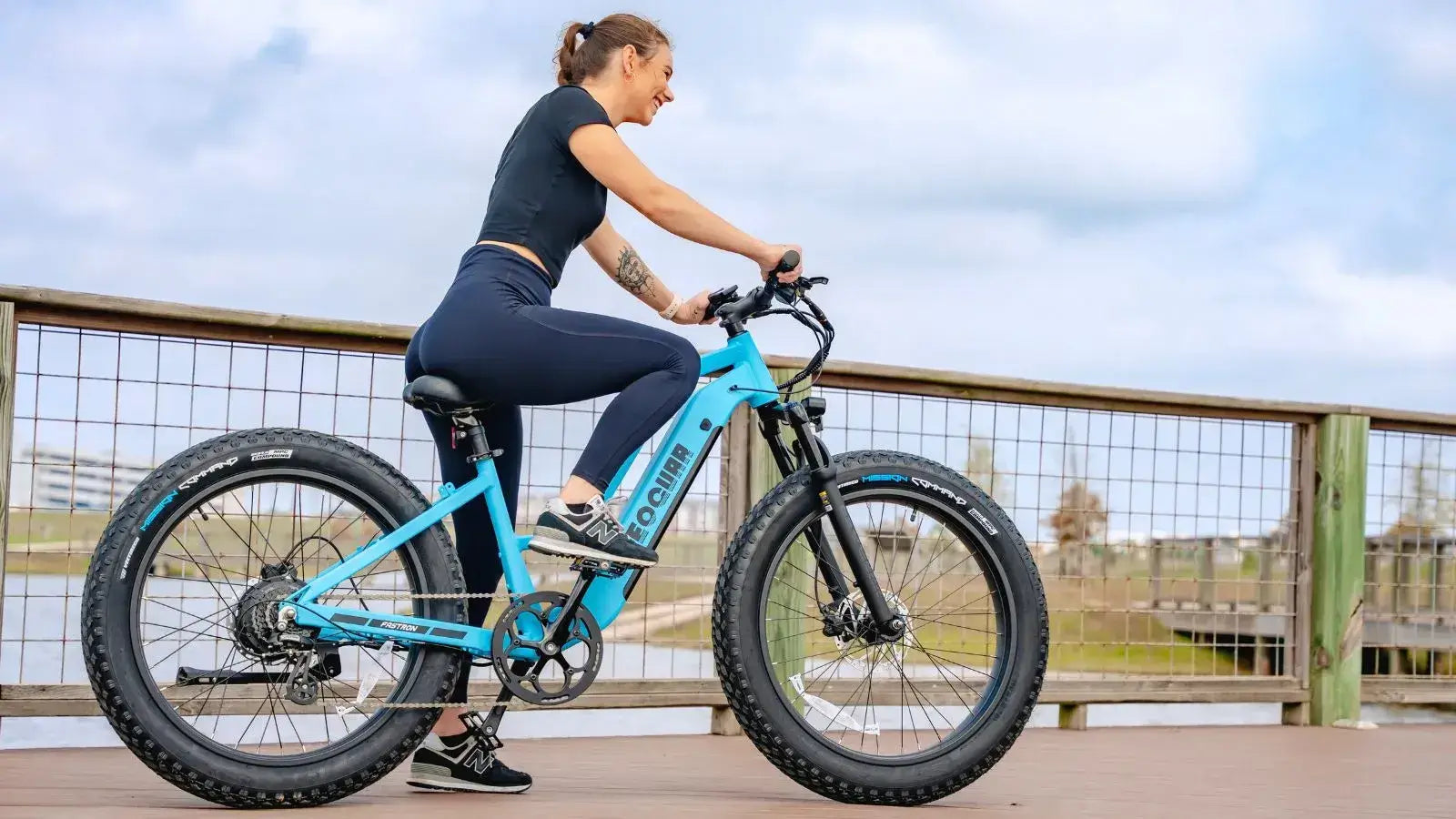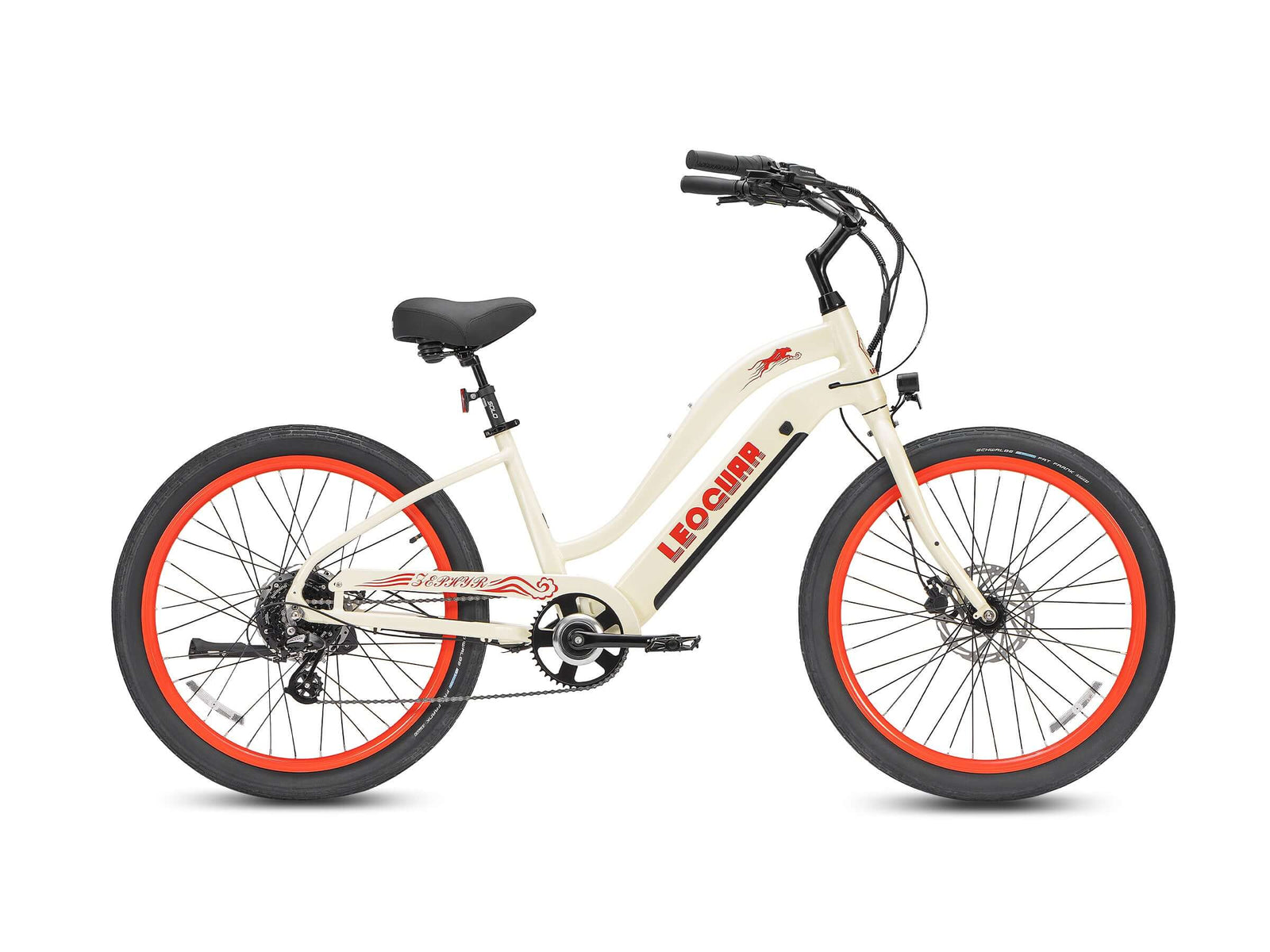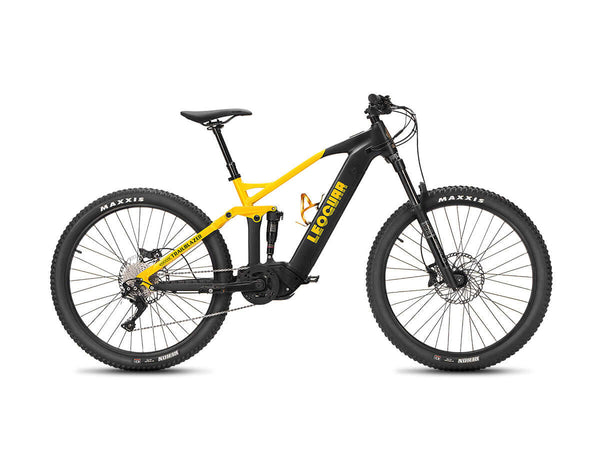
Electric Bike Pedal Assist: Power Your Mountain Rides
The Core Concept
That tough climb that once felt like work can now be fun. The epic, all-day ride that seemed impossible is suddenly on your weekend plan. This change in mountain biking isn't magic. It's the result of smart technology at the heart of every electric assist mountain bike: the Pedal Assist System (PAS).
For many riders, this system is a mystery. We're here to change that. In this guide, we'll explain what an electric bike pedal assist is, explore how it works for trail riding, and share our expert tips on how to use it to get the most out of every ride.
At its heart, an electric bike pedal assist is a system that gives power from a motor only when you are actively pedaling. It doesn't do the work for you. It does the work with you. The best way to describe it is that it feels like you've been given superhuman legs or a permanent, powerful tailwind. The motor boosts the effort you put into the pedals. This makes it easier to climb hills, speed up, and keep your pace over long distances. The most important rule to understand is this: if you stop pedaling, the motor assistance stops.
This is the key difference that defines the pedal-assist experience. This smart partnership between rider and machine is made possible by three main parts working together: a sensor, a controller, and a motor.
How Pedal Assist Works
To understand your electric assist mountain bike, you need to look inside the engine room. The pedal assist system relies on a smooth conversation between three key parts. Think of it as a simple, high-speed feedback loop.
- The Sensor: This is the system's "ears." Its only job is to detect that you are pedaling. As soon as you turn the cranks, the sensor picks up the motion.
- The Controller: This is the system's "brain." It receives the signal from the sensor and, based on the assistance level you've selected on your handlebar display, it calculates exactly how much power the motor should deliver.
- The Motor: This is the system's "muscles." It receives the command from the controller and applies turning force to the drivetrain, boosting your own pedaling power and pushing you forward.
This entire process happens in a split second. The basic flow is always the same:
You Pedal → Sensor Detects Motion → Controller Processes Signal → Motor Delivers Power
On most modern electric assist mountain bikes, this system is highly built-in. As noted in detailed expert tests of pedal-assist motor systems, the motor is typically housed directly in the bottom bracket area. This "mid-drive" setup keeps the weight low and centered, which is critical for keeping balanced handling and a natural ride feel on technical trails.
Cadence vs. Torque Sensors
While all pedal assist systems follow the same basic rule, the way they sense your pedaling makes a huge difference in ride quality. This is determined by the type of sensor used, and for mountain biking, the difference is critical. This is the secret to a natural-feeling ride.
The Cadence Sensor: An "On/Off Switch"
A cadence sensor is the simpler of the two technologies. It works by detecting if the crank arms are turning. As long as you're turning the pedals, the sensor tells the controller to deliver a fixed amount of power matching your selected assist level (like 25% in Eco, 50% in Trail).
The Feel: The power delivery can feel sudden and less natural. There's often a slight delay from when you start pedaling to when the motor kicks in, and another delay when you stop. It can feel like an "all or nothing" boost, which makes careful power control difficult.
Trail Suitability: While fine for bike paths and casual riding, cadence sensors are less than ideal for technical mountain biking. The jerky power delivery can cause the rear wheel to spin out on loose climbs or push you forward unexpectedly in tight corners. They are most commonly found on budget-friendly e-bikes.
The Torque Sensor: A "Dimmer Switch"
A torque sensor is far more advanced. It measures how hard you are pushing on the pedals. It detects the force you're applying and tells the motor to provide a matching amount of assistance. Push gently, and you get a small boost. Stomp on the pedals to get over a ledge, and you get a powerful surge of support, instantly.
The Feel: This is where the "superhuman legs" feeling truly comes from. The assistance is smooth, natural, and feels like a direct extension of your own body. As you push harder to clean a technical root section, the bike gives you more power in that exact moment, then backs off as you ease up on the other side. There is no lag or surging.
Why Torque is King for e-MTBs: This immediate, matching response is what you need for true off-road riding. It allows you to keep traction on loose, steep climbs, control the power through tight switchbacks, and avoid unwanted power surges that can throw you off balance. In-depth reviews often analyze how different eMTBs deliver power, and this "feel" is largely a result of the advanced torque sensor technology and software tuning from leading motor makers.
| Feature | Cadence Sensor | Torque Sensor |
|---|---|---|
| How it Measures | If you are pedaling | How hard you are pedaling |
| Ride Feel | On/Off, less responsive | Smooth, natural, natural |
| Best For | Casual riding, flat paths | Technical climbs, dynamic trail riding |
| Commonly Found On | Budget-friendly e-bikes | Most mid- to high-end electric assist mountain bikes |
Mastering Trail Assist Levels
Understanding the tech is one thing. Using it effectively on the trail is another. Most e-MTBs offer 3 to 5 assist levels, commonly labeled something like Eco, Trail (or Tour), and Boost (or Turbo). Learning to switch between these modes dynamically is the key to unlocking your bike's full potential, managing battery, and improving your control.
On Steep, Technical Climbs
- Strategy: Use a higher assist level like Trail or Boost, and shift into an easier gear on your cassette.
- Why: The goal here is momentum. High assist helps you power over roots, rocks, and ledges without stalling. The key is to keep a smooth, consistent pedaling rhythm. The motor provides the brute force, while your smooth pedaling keeps traction and control.
On Flowing, Rolling Singletrack
- Strategy: Settle into a mid-level assist like Eco or Trail.
- Why: This is the sweet spot for fun. It provides enough support to help you keep speed out of corners and over small rises, enhancing the "flow" of the trail without making the bike feel like it's running away from you. It's a perfect balance of rider effort and motor support, and it saves significant battery compared to staying in Boost.
On Long, Grinding Fire Roads
- Strategy: Drop it into the lowest setting, Eco.
- Why: This is all about efficiency. On a long, non-technical climb to the top of a descent, you don't need a massive boost. Eco mode takes the edge off and reduces fatigue, but requires you to do more of the work, which saves a huge amount of battery for when you really need it. Think of it as your transfer stage mode.
On Descents
- Strategy: Turn the assist Off or, at most, leave it in Eco.
- Why: You don't need motor assistance when gravity is on your side. Turning the system off makes the bike feel more like a traditional mountain bike, improving handling and predictability. Critically, it prevents any accidental power delivery if you make a quick "ratchet" pedal stroke to set up for a corner or level the bike in the air. This saves a massive amount of battery. As experts note, learning to manage these modes is what truly unlocks the capability of modern e-mountain bikes.
Assist vs. Throttle
A common point of confusion is the difference between an electric bike pedal assist and a throttle. While both use a motor, they function in basically different ways, and the difference is especially important for mountain biking.
A throttle works just like it does on a scooter or motorcycle. You push a lever or twist a grip, and the motor engages to push the bike forward, with no pedaling required. A pedal assist system, as we've covered, requires you to be pedaling for the motor to provide any help. So, why are virtually all true electric assist mountain bikes pedal-assist only?
Trail Access & Rules: This is the biggest reason. In many regions, including most of the United States, e-bikes are put into classes. Class 1 e-bikes are pedal-assist only with a maximum assisted speed of 20 mph. Class 2 e-bikes have a throttle and a max speed of 20 mph. Class 3 e-bikes are pedal-assist only with a max assisted speed of 28 mph. Most mountain bike trails that permit e-bikes specifically allow only Class 1 models. Throttle-equipped bikes are often classified as motorized vehicles and are prohibited.
Control & Safety: A throttle can be a problem on a technical trail. An accidental twitch of a thumb lever at the wrong moment could send you surging into a tree or off a ledge. Pedal assist is far more natural and safer, as the power is directly tied to your own natural pedaling motion.
Ride Experience: Mountain biking is an active sport. The goal of an e-MTB is to enhance that experience, not eliminate the physical aspect. Pedal assist keeps the feeling of riding a bicycle, preserving the connection between rider, bike, and trail.

Battery Range and PAS
Your bike's battery is its fuel tank, and your use of the pedal assist system is the throttle. The relationship is simple: the more assistance you ask for, the faster you will drain the battery. Riding everywhere in Boost mode might be fun, but it will cut your ride short. Mastering battery management is about being smart. The single best way to extend your range is to use the lowest assist level possible for the terrain you're on. Use Eco on flats and fire roads, Trail for rolling singletrack, and save Boost for only the steepest, most technical punches.
Beyond mode selection, remember that an e-MTB still has gears for a reason. Shifting to the right gear for a climb is just as important as on a traditional bike. Staying in a smooth, efficient pedaling rhythm (around 70-90 RPM) is where motors are most efficient. Mashing a hard gear in a high assist mode will drain your battery exceptionally fast. By actively managing both your assist level and your gears, you can dramatically extend your range and ensure you always have enough power to get back home.
Embrace the Boost
The pedal assist system on an best hardtail electric mountain bike is more than just a motor. It's a smart tool that redefines what's possible on a ride. It's not about removing effort, but about making that effort go further. By understanding how the system works—from the detail of a torque sensor to the strategy of using assist levels on the trail—you transform from a passenger to a pilot. You gain control, improve efficiency, and unlock a new level of fun and exploration. The best way to truly understand it is to experience it. We encourage you to test ride a modern e-MTB, feel the natural push of a torque-based system, and discover how it can empower your own adventures.
FAQ
1. What is the difference between pedal assist and throttle on an electric bike?
Pedal assist only works when you're actively pedaling and provides power based on your pedaling effort. A throttle works like a motorcycle - you twist or push a control and the motor provides power without any pedaling required.
2. How long does the battery last on an electric assist mountain bike?
Battery life depends on terrain, assist level used, rider weight, and riding style. Most e-MTBs provide 20-60 miles of range, with lower assist modes like Eco extending range significantly compared to high-power Boost modes.
3. Can I ride an electric assist mountain bike without using the motor?
Yes, you can turn off the pedal assist system completely and ride it like a regular mountain bike. However, e-MTBs are heavier than traditional bikes due to the motor and battery, so it requires more effort.
4. What's the difference between cadence and torque sensors?
Cadence sensors detect if you're pedaling and provide a fixed amount of power. Torque sensors measure how hard you're pedaling and provide proportional assistance - the harder you pedal, the more help you get.
5. Do I need special maintenance for the pedal assist system?
The pedal assist system requires minimal maintenance beyond keeping it clean and dry. Regular bike maintenance like chain care and brake adjustments are more important. Have the system checked by a qualified shop annually or if you notice any performance issues.










































Leave a comment